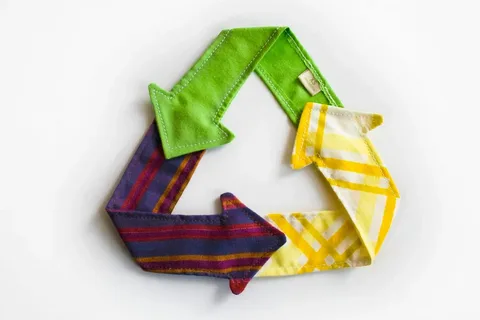“Empowering Communities Through Textile Recycling”

Introduction
In an era defined by sustainability, textile recycling has emerged as a powerful tool to unite communities around a common goal—reducing waste and building a greener tomorrow. From neighbourhood drop-offs to school partnerships, collective action can transform discarded fabrics into meaningful resources. Let’s explore how community-centric approaches to textile recycling can inspire action, simplify access, and make a lasting environmental impact.
1. Why Community Textile Recycling Matters
Textile waste remains a formidable environmental challenge—globally, millions of tons of fabrics find their way into landfills each year, contributing to greenhouse gas emissions, soil contamination, and resource depletion. But when communities band together, the impact can be profound. Local focus enables better access, drives awareness, and fuels behavioral change much more effectively than isolated efforts.
Beyond environmental benefits, community textile recycling can:
-
Promote civic engagement—neighbors volunteering, schools participating, and local groups hosting collection events.
-
Support local economies—by diverting textiles into reuse markets or nurturing small recycling ventures.
-
Educate and empower—through informative programs, showcasing the value of circularity and promoting sustainable habits.
2. How It Works: Localized Steps Toward Collective Action
-
Set Up Accessible Collection Points
Whether it's textile recycling bins at schools, community centers, or retail fronts, visibility and ease-of-use make recycling second nature. Ideally, these drop-off sites should be well-placed and maintained. -
Coordinate Drives and Events
Hosting “Clothing Swap Days,” “Textile Drive Weekends,” or seasonal cleanouts helps raise awareness and gather materials in bulk. These events present both education and donation opportunities. -
Partner with Local Institutions
Schools, libraries, and small businesses can join forces to host bins or organize fundraising drives—encouraging both local participation and financial support for community groups. -
Collect, Sort, Repurpose
Materials collected are sorted by condition. Those in good shape are resold or donated; the rest can be shredded into rags, repurposed into new products, or used as industrial raw materials. -
Share Impact and Feedback
Transparency builds trust. Regular updates—how much was collected, how materials were used, and the outcomes achieved—reinforce participation and motivate continued involvement.
3. Success Stories That Inspire
-
School Partnerships
Imagine a local high school that hosts a textile recycling bin and promotes it through assemblies. Parents, students, and staff drop off old clothing, raising funds or awareness—and noticing how educational it becomes for younger generations. -
Neighborhood Cleanup Meets Recycling
A neighborhood association might hold a cleanup event, collecting clothing along with other waste. Bringing textiles into the fold spotlights sustainability and offers a tangible outlet for community contributions. -
Retail Collaboration
A small boutique or café could place a branded textile recycling bin. As customers see the initiative, it reinforces the shop’s eco credentials and raises awareness around sustainable habits.
4. Overcoming Common Challenges
-
Awareness Gaps
Many people still don’t know what textile recycling is or how to access local options. Posters, social media outreach, and word-of-mouth campaigns go a long way. -
Sorting and Contamination
Establish clear instructions: clean, dry textiles only; separate shoes, belts, or linens as needed to avoid damaging good materials. -
Logistics and Costs
Partnering with a dedicated recycling service that offers pod collection or valet pickups can relieve communities of operational burdens. Pooled efforts also lower costs through shared logistics. -
Sustaining Momentum
Keep participants engaged by tying recycling efforts to larger causes: Earth Day celebrations, school fundraisers, or recognition programs.
5. Why It Works: Community + Sustainability = Impact
Communities harness collective strength:
-
Greater participation—friendly competition (e.g., between schools or neighborhoods) drives higher engagement.
-
Localized access—fewer barriers for drop-off, especially when bins are nearby.
-
Shared values—local pride and environmental responsibility can fuel sustained action.
Plus, when residents see their peers actively participating, it normalizes the behavior—and turns textile recycling into a habit rather than a chore.
Conclusion
Community-driven textile recycling isn’t just about collecting clothes—it’s about cultivating shared purpose, strengthening local bonds, and nurturing a greener culture. By embracing accessible collection points, collaborative events, clear communication, and smart partnerships, neighborhoods can transform waste into opportunity.
Together, we can stitch sustainability into the fabric of our communities—driving real change, one garment at a time. That’s the mission central to Green City Recycle, where community recycling initiatives pave the way toward a cleaner, more connected future.







